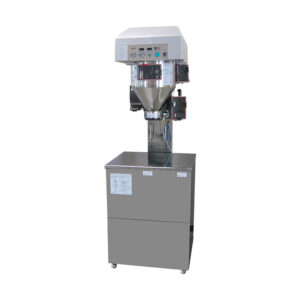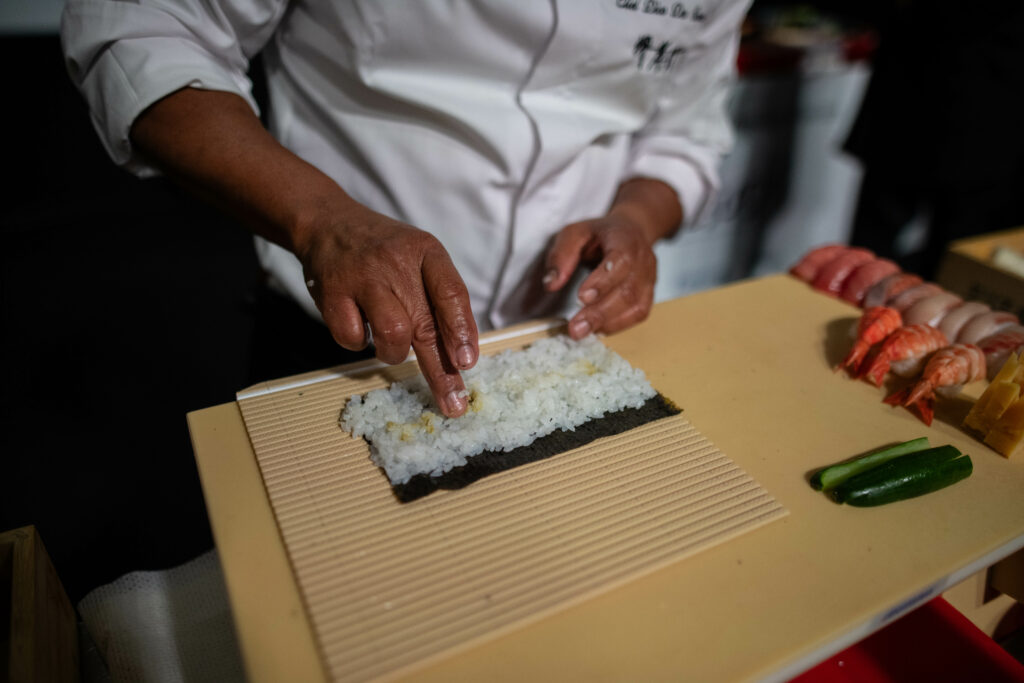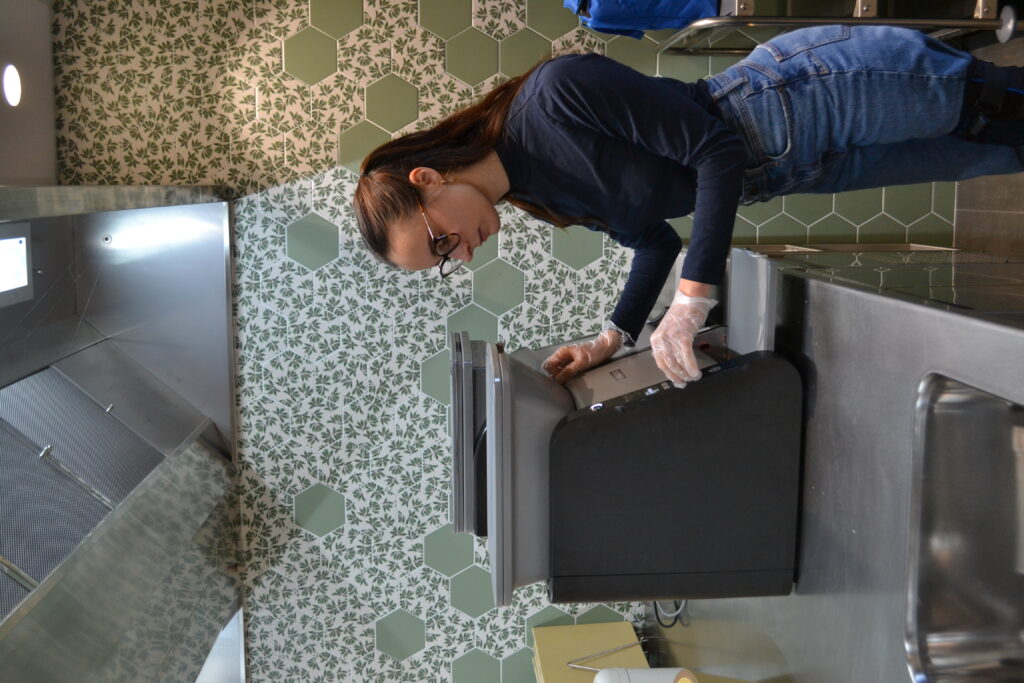For centuries, the making of sushi has relied on the meticulous expertise of sushi masters. Each gesture is repeated thousands of times to achieve perfection: washing the rice, mixing, cutting... But with the evolution of technology, machines are now capable of automating certain stages of the process, raising an essential question: does the future of Sushi lie with the machine or with Man? Let's take a look at the advantages and disadvantages of these two approaches in a Man VS Machine battle.
Step 1: Washing the rice
Washing the rice is a fundamental stage that directly influences the final texture of the sushi. Poorly washed rice can alter the quality of the finished product, leaving behind excess starch that makes the rice sticky and less palatable. Conversely, overly aggressive washing can break the grains and alter the ideal consistency sought by Sushi chefs.
By hand: A painstaking and time-consuming process
Traditionally, washing rice is a task that requires a great deal of care and precision. The sushiman must rinse the rice several times using gentle movements to remove excess starch without damaging the grains. This step involves:
- Numerous rinse and stir cycles Washing: The rice must be washed in several successive cycles until the water runs clear. Each cycle requires careful mixing to avoid breaking the grains.
- Continuous quality control : It's difficult to guarantee perfect consistency between each batch, as the force applied, the rinsing time and the amount of water used can vary from one sushiman to another.
- Human resources dedicated solely to this task Manual rice washing takes time away from other preparations, which can slow down production, especially in a high-volume restaurant.
As well as being time-consuming, hand-washing often results in excessive water consumption, as it is difficult to measure precisely the amount needed to achieve optimum results.
With a machine: Optimised, consistent washing
Rice washing machines, such as the RM401AGCEThis stage can be significantly optimised. Here are the major advantages:
- Water consumption reduced by 30 % Automated washing system: Thanks to an automated washing system, water is used more efficiently, reducing wastage.
- Optimum wash time and quality The machine applies constant wash cycles, guaranteeing even rinsing of the rice each time it is used.
- Precision and time savings Unlike a manual method where grammage and texture can vary, the machine ensures consistent quality without human intervention.
- Release of personnel The sushiman can concentrate on other essential tasks, such as cutting the fish, preparing the garnishes or assembling the sushi.
In restaurants, this gain in time and efficiency makes it possible to increase production rates and ensure consistent quality, an essential criterion for building customer loyalty.
👉 Winner: the machine - It makes washing faster and more efficient, while optimising resources.

Step 2: Mixing the rice after cooking
Once washed, the rice must be cooked and then mixed with vinegar to obtain the sticky, lightly flavoured texture that is essential for making Sushi.
By hand
- Requires constant monitoring
- Risk of uneven mixing
- Rice can be crushed
- Saving space and time
- Gentle blending to preserve the texture of the rice
- Ambient air cooling
- Direct pouring of rice into the sharibox for immediate use
👉 Winner: the machine - It ensures that the rice is perfectly mixed and ready to use, with no risk of breakage.
Read our guide to the difference between handmade 100% Sushi and Sushi made with the help of machines. here.
Stage 3: Making rice mats
The rice mat is the basis of many types of sushi, including Maki, Uramaki (California rolls) and other variations. Its evenness is essential to ensure that the roll holds together well and is presented harmoniously. A mat that is too thick may overpower the filling and alter the balance of flavours, while one that is too thin may not wrap the ingredients well, making the Maki fragile and difficult to handle.

By hand: A long and arduous process
Traditionally, making rice mats is a manual task requiring precision and repetition. Here are the main constraints faced by Sushi chefs:
- A relatively long preparation time Spreading the rice evenly over the sheet of seaweed (nori) takes time. On average, a chef takes 20 seconds or more to shape a correct carpet. In a high-volume department, this delay can slow down the rate of production and create a production bottleneck.
- Repetitive and physical work The distribution of rice requires specific movements, performed hundreds of times a day. This can lead to pain in the wrists, shoulders and back, increasing the risk of musculoskeletal disorders (TMS) in sushimen.
- A lack of uniformity Even with a great deal of experience, it's difficult to guarantee perfect evenness with every mat. The thickness can vary, as can the distribution of the rice, which has a direct impact on the uniformity of the Maki once rolled.
With the ASM895CE: Speed and perfection on every carpet
L'ASM895CE is a machine specially designed to automate the production of rice mats, offering a number of advantages:
- A perfectly even carpet in just 5 seconds Thanks to its advanced technology, it deposits an even layer of rice on the nori sheet, guaranteeing a constant thickness and precise weight.
- Reduced fatigue and injuries By eliminating repetitive and physical movements, it preserves the health of sushimen and reduces the risk of musculoskeletal disorders.
- Increased productivity Its speed enables five chefs to work simultaneouslyThis optimises production flow in the kitchen. This is particularly advantageous in high-volume restaurants or sushi chains where speed and standardisation are essential.
👉 Winner: the machine!
L'ASM895CE is an essential asset for professionals. It improves speed, regularity and comfort at work while guaranteeing optimum results, which are difficult to achieve manually on large production volumes.
Step 4: Cutting the Maki after rolling them
Cutting perfectly even Maki is a challenge. Using an unsharp knife can crush the roll and spoil the presentation.
By hand
- Requires a sharp blade
- Requires experience to cut evenly
- Risk of accidents and fatigue
With the machine
- Precise, regular cutting
- Several rolls can be cut at once
- Optimised safety thanks to a protected mechanism
👉 Winner: the machine - Consistent quality and improved productivity.
Man VS Machine, a complementary duo
While machines are revolutionising the preparation of sushi by guaranteeing speed, precision and productivity, they are not replacing human expertise. The role of the sushiman remains essential to the final assembly, creativity and taste experience. By combining traditional know-how with technology, professionals can offer sushi of impeccable quality while optimising their yield. The machine doesn't replace the human being, it assists him and allows him to concentrate on what's essential: the art of Sushi.
For chefs and restaurateurs wishing to deepen their mastery of traditional Japanese techniquesthe Japanese Cuisine Academy offers dedicated training courses for professionals. Supervised by experts, these courses teach the precise gestures, specific cuts and fundamental principles of Japanese cuisine, while respecting traditions. A real asset for perfecting your skills and offering your customers an authentic experience.





